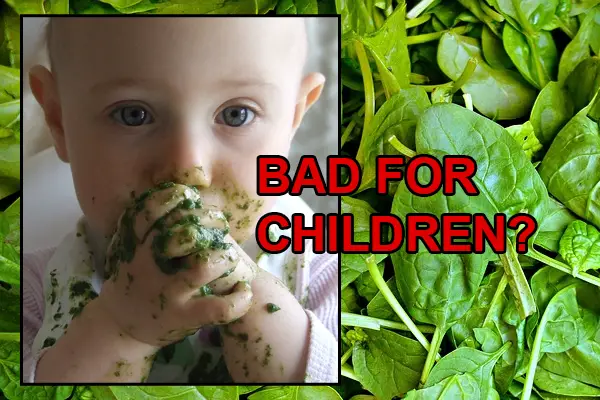
Spinach is one of the foods that is hard to think of as unhealthy. It is a dark leafy green, which is full of fiber, folate, carotenoids, saponins and flavonoids. Carotenoids act as protection against chronic disease, saponins lower cholesterol and reduce your risk of heart disease, and flavonoids get rid of harmful free radicals and inflammation. Sounds like a fantastic vegetable, and it is.
Yet, spinach is still not a “perfect” superfood after all, for a couple different reasons.
Although it gained fame in the 1960s thanks to the cartoon Popeye, the sailor with superhuman strength who ate a lot of spinach, this vegetable was purposefully promoted by the U.S. government – not because of its health benefits (although there are many), but because the Great Depression took away a lot of iron-rich foods.
As it was later discovered, there is not as much iron in spinach as originally thought (it’s actually lentils that are the best vegetarian source of iron). What it is instead good for are its Vitamins K, A and C; as well as folate, manganese, and magnesium. Its strong antioxidants like neoxanthin and violaxanthin protect the body against DNA damage and oxidative stress that leads to cancer, and heart disease.
Its vitamins boost immunity, and protect health of the eyes, bones, and skin. Let’s further examine the heath benefits of spinach, and the surprisingly negative effects it may have on kids (and adults for that matter).
Raw Spinach nutrition , 1 cup contains (USDA):
-7 calories
-1 gram protein
-1 gram fiber
-1 gram carbohydrates
-145 mg Vitamin K (223% DV)
-141 mg Vitamin A (28% DV)
-58 mg Folate (18% DV)
-.27 mg Manganese (15% DV)
-.4 mg Vitamin C (14% DV)
-0.8 mg Iron (10% DV)
-24 mg Magnesium (7.5% DV)
-30 mg Calcium (3.75% DV)
-167 g Potassium (3.6% DV)
However, just like with most things in life, even good things are better in moderation. Spinach has one major innate drawback – it contains a compound called oxalate. This compound binds to mineral compounds in the body, such as calcium and magnesium, and by doing so may interfere with mineral absorption and lead to formation of kidney stones.
Some people also may have a condition called oxalate sensitivity, which can lead to brain fog in those who have it, or in people who over-consume spinach and other greens that are high in this compound.
Besides oxalate, there is one more factor to take into account when eating spinach – conventional, non-organic to be exact.
And that is – its place on a well known list from the Environmental Working Group (EWG) called the Dirty Dozen, which it “earned” for having high amounts of pesticide residues.
One of the pesticides is most dangerous for children. It highly increases the risk of ADHD, which is one of the reasons why it is banned in Europe. In the U.S., most of non-organic spinach comes with this risky pesticide.
Spinach is #2 on the Dirty Dozen for a Big Reason
The EWG placed spinach second on the Dirty Dozen list, right after strawberries. This is because by weight, it had the most pesticide residues of any type of produce tested by the USDA. It also contained a neurotoxic insecticide banned on food crops in Europe.
When the USDA tested 683 conventional spinach samples, 70% of these samples contained permethrin. At high doses, permethrin causes seizures, tremors, and other symptoms and disorders of the nervous system.
However, studies have found that even at low-dose exposure, it can lead to neurological damage, especially in children.
Children who have detectable levels of permethrin in their bodies are twice as likely to be diagnosed with Attention-deficit/hyperactivity disorder (ADHD) than children with non-detectable levels of this insecticide.
Permethrin is also a possible carcinogen, and an endocrine disruptor. It can lead to liver damage, and reproductive issues. It is also toxic to bees.
Besides being found on spinach, permethrin is also hiding in head lice treatments and mosquito-repellent fabrics.
To avoid permethrin, there are a few consumer tips to follow:
- Buy organic spinach
- Wash spinach (and other produce) thoroughly. Unwashed produce has much higher concentration of pesticides.
- Use an organic pesticide remover when washing vegetables and fruits.
- Cooking spinach may reduce pesticide levels, but that will also reduce its nutritional content.
- Avoid bug sprays containing permethrin. Instead, rely on organic bug sprays and natural pest control products.
Other issues concerning non-organic spinach include:
-The presence of three fungicides: mandipropam, fluopicolide and ametoctradin. These three are fairly uncommon on other food crops.
-206 conventional spinach samples (about 30% of all samples) contained a pesticide that is not allowed on spinach but is used on other food crops.
-A few samples tested positive for dichlorodiphenyltrichloroethane (DDT), a pesticide that has been banned in the U.S. for about 40 years now. The pesticide residues are picked up by the plant from the soil.
Most if not all of these pesticides can be removed by either buying organic or using an organic pesticide-removing washing liquid.
For the full extended Dirty Dozen list of produce and its dirty details, check out the EWG website.
Avoiding toxic pesticides is just one way to slash your cancer risk. For more info, you can check out ‘The Truth About Cancer: A Global Quest.’ Click here to learn more.
Recommended reading:
Two Vegetables Reported “Extraordinarily Toxic” Yet Not a Part of the New “Dirty Dozen”
The Reason Apples Earned #1 for Dirtiest Produce: 47 Pesticides & Carcinogens
A Froot Loops Sample was Sent to a Lab for Tests..What They Found Should Have Every Parent Concerned
Thanks for installing the Bottom of every post plugin by Corey Salzano. Contact me if you need custom WordPress plugins or website design.





